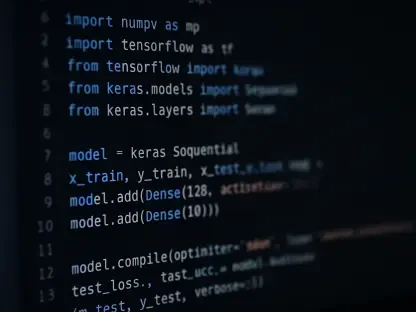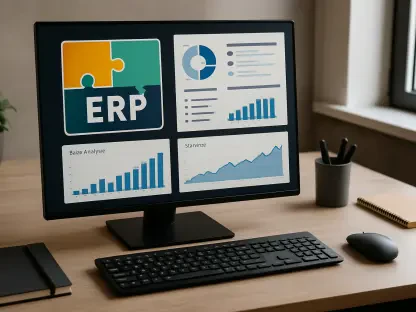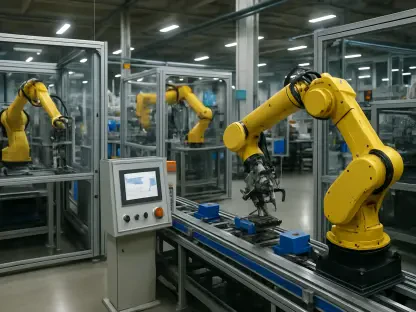Unveiling the Digital Backbone: Why Cloud and DevOps Matter Now
In an era where digital agility defines competitive advantage, the cloud and DevOps market stands as the cornerstone of enterprise innovation in 2025, with global spending on cloud services surpassing trillions annually. Organizations across industries are racing to harness scalable infrastructure and streamlined development pipelines to outpace rivals. This analysis dives into the pulsating heart of this sector, examining how artificial intelligence (AI), hybrid architectures, and platform engineering are reshaping operational paradigms. The purpose is clear: to equip technical leaders and architects with actionable insights into current market dynamics and future trajectories. As businesses grapple with escalating complexity and cost pressures, understanding these trends is not just beneficial—it’s imperative for survival in a hyper-connected landscape.
Market Dynamics: Key Trends and Data Driving the Sector
AI Revolution: Automation Reshaping Cloud Operations
The integration of AI into cloud and DevOps practices marks a seismic shift in the market, with adoption rates soaring among enterprises seeking efficiency. Advanced AI agents, capable of managing intricate cloud resources, are gaining traction, automating tasks that once demanded extensive human intervention. This trend is evidenced by significant investments in tools that enhance pipeline governance, reducing errors and ensuring compliance through embedded automation. However, the market faces hurdles in balancing autonomy with accountability, as security and regulatory concerns temper unchecked deployment. Data suggests that while AI reduces cognitive load by up to 30% in some engineering teams, nearly half of surveyed firms cite governance as a barrier to full-scale implementation.
A deeper look reveals that the push for AI-driven automation is not merely about operational speed but also about strategic foresight. Enterprises are leveraging these tools to predict resource needs and optimize workloads in real-time, a capability that could redefine cost structures. Market projections indicate that by 2027, over 70% of cloud operations will incorporate some form of AI agent, signaling a maturing segment. Yet, the challenge lies in establishing robust frameworks to mitigate risks, as unchecked automation could expose vulnerabilities in mission-critical systems. This duality of opportunity and caution defines the current AI landscape within the sector.
Platform Engineering: A Pivot to Developer Empowerment
Platform engineering emerges as a dominant force in the market, transitioning from fragmented toolsets to cohesive internal development platforms (IDPs) designed with a product mindset. This segment, still in the early adopter phase, sees substantial capital inflow, with acquisitions in developer experience (DevEx) technologies reflecting a boardroom priority to boost productivity. Industry data highlights that companies focusing on DevEx report a 25% uptick in deployment frequency, underscoring the tangible impact of streamlined platforms. Nevertheless, tool fragmentation and siloed organizational structures hinder seamless adoption, creating a gap between aspiration and execution.
The market’s response to these challenges involves a shift toward value-stream thinking, aligning platform capabilities with measurable business outcomes rather than isolated technical metrics. Analysts note that successful implementations often hinge on integrating disparate systems into unified workflows, a process that demands both cultural and technological overhaul. As this trend evolves, the focus on reducing complexity for developers is expected to drive further investment, potentially reshaping how enterprises structure their engineering teams. The trajectory suggests a growing recognition that developer success is synonymous with organizational success, positioning platform engineering as a critical market lever.
Hybrid and Multi-Cloud Strategies: Navigating Global Complexities
Hybrid and multi-cloud architectures dominate the operational landscape, driven by imperatives of compliance, digital sovereignty, and resilience. Market analysis shows that over 80% of large enterprises now operate in hybrid environments, a necessity in sectors like retail and manufacturing where on-premises systems support low-latency tasks. Kubernetes has solidified its role as the unifying substrate, enabling seamless workload distribution across diverse cloud providers and regional hubs. This strategic adoption is further fueled by the rise of niche cloud services complementing the dominant players, creating a fragmented yet interconnected ecosystem.
Geopolitical factors, such as data sovereignty regulations, add layers of complexity to this market segment, compelling firms to tailor strategies by region. Retail giants, for instance, often maintain localized data centers for compliance while leveraging global cloud platforms for analytics, a balance that ensures both agility and adherence to law. Projections indicate that by 2026, hybrid cloud spending will account for nearly half of total cloud expenditure, reflecting its entrenched status. The market’s pragmatic approach—prioritizing impactful migrations over blanket vendor commitments—signals a maturation that favors flexibility over ideological debates about lock-in.
Cost Optimization and FinOps: Financial Discipline in Focus
Amid economic constraints and the high compute demands of AI, FinOps has matured into a cornerstone of cloud market strategy, with adoption reaching late majority status. Enterprises are moving beyond basic budgeting to sophisticated cost optimization, driven by the need to maximize value from escalating cloud investments. Data reveals that firms implementing FinOps practices achieve up to 20% reductions in cloud spend, a critical advantage in a cost-conscious environment. This discipline is particularly vital as AI workloads strain budgets, pushing organizations to scrutinize every dollar spent on infrastructure.
The market’s evolution in this area points to a strategic integration of financial oversight into project lifecycles, ensuring sustainability alongside innovation. Analysts predict that FinOps tools will become embedded in over 60% of cloud management platforms by 2027, reflecting a shift toward proactive rather than reactive cost control. This trend also intersects with broader resilience goals, as optimized spending enables reinvestment in hybrid architectures and governance frameworks. The financial lens through which cloud operations are now viewed underscores a market increasingly attuned to balancing growth with fiscal responsibility.
Future Projections: Emerging Horizons and Market Shifts
Looking ahead, the cloud and DevOps market is poised for transformative changes driven by both technological and regulatory currents. Innovations in AI, such as standardized protocols for integrating large language models across systems, are expected to streamline automation further, potentially capturing a significant share of operational workflows within two years. Simultaneously, the emphasis on cost management through FinOps will deepen, as economic pressures compel firms to refine spending strategies, especially for resource-intensive AI initiatives. Regulatory landscapes around data sovereignty and sustainability are also anticipated to accelerate hybrid cloud adoption, reshaping vendor dynamics globally.
Another critical projection centers on tool consolidation, as market players grapple with cognitive overload from proliferating solutions. The next few years may witness a wave of mergers and integrations aimed at simplifying ecosystems, with platform engineering likely to spearhead this movement by prioritizing developer-centric design. Resilience, too, will remain a focal point, with hybrid and multi-cloud setups evolving to address not just technical but also geopolitical risks. These shifts suggest a market moving toward stability and integration, where the value lies in cohesive systems rather than isolated innovations.
Reflecting on Market Insights: Strategic Pathways Forward
Looking back, this analysis of the cloud and DevOps market in 2025 uncovers a sector at a pivotal juncture, where matured practices like Kubernetes and observability coexist with groundbreaking advancements in AI and platform engineering. The examination highlighted how hybrid architectures and FinOps address both operational and financial challenges, while tool sprawl emerges as a persistent hurdle to efficiency. Each trend, from AI automation to developer empowerment, paints a picture of an industry striving for balance amid rapid evolution.
For organizations navigating this terrain, the path forward involves several actionable steps. Investing in governance frameworks to safely harness AI capabilities stands out as a priority, alongside pilot projects to test automation in controlled settings. Streamlining platform engineering efforts through integrated, developer-focused solutions offers a way to combat complexity, while embedding FinOps early in planning cycles ensures sustainable growth. Ultimately, aligning these strategies with measurable business outcomes provides a roadmap for turning market insights into competitive edges, setting the stage for resilience and innovation in the years that follow.









